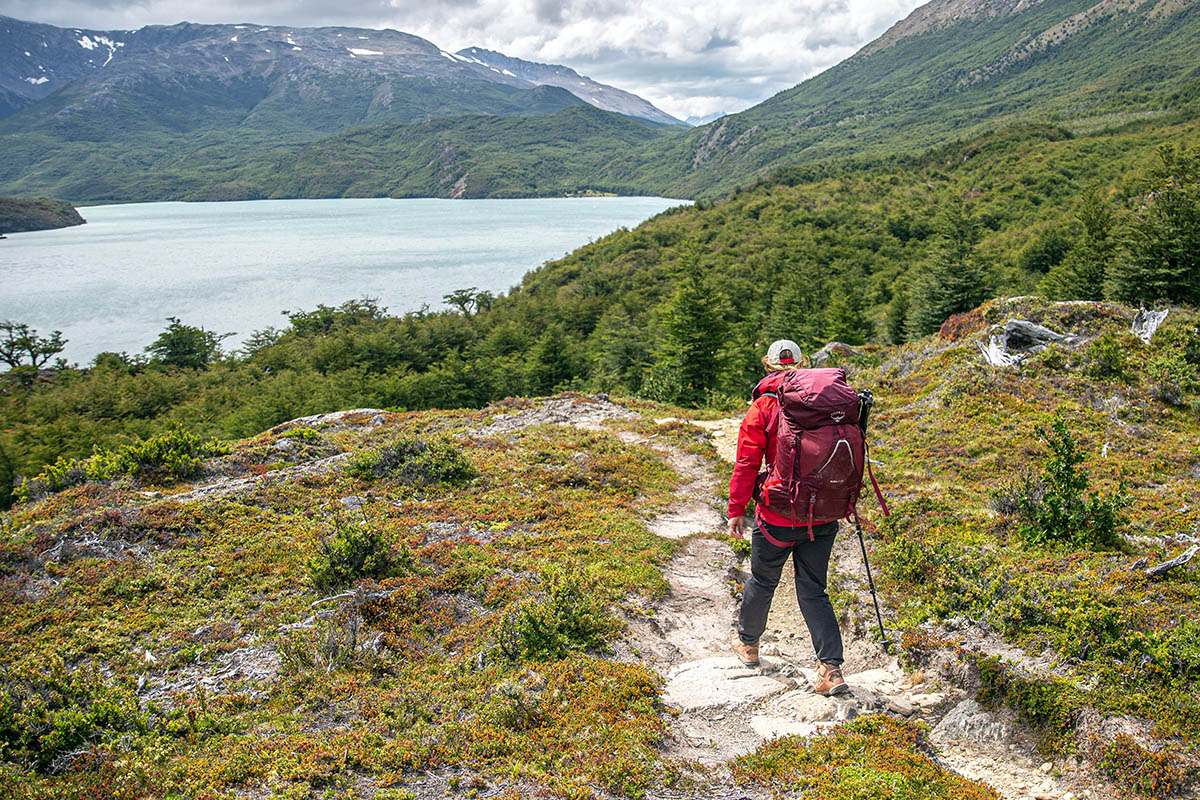
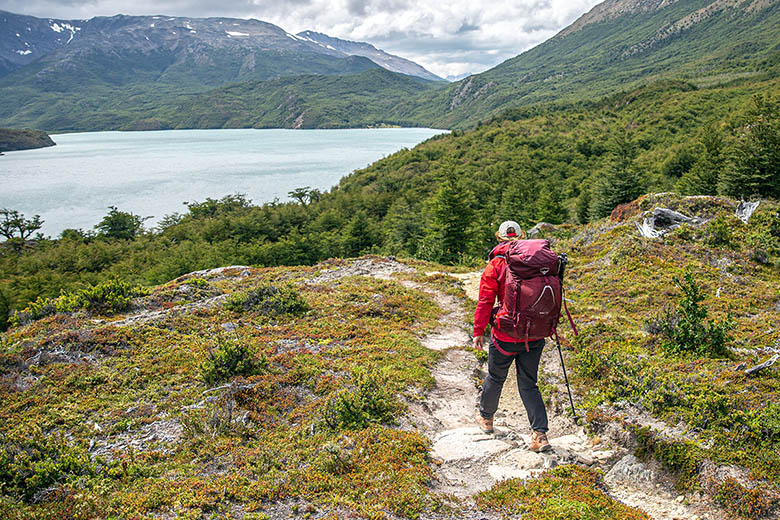
Price: $290
Weight: 3 lb. 13.4 oz. (size XS/S)
Capacities: 50, 65L
What we like: The comfort, durability, and performance of a luxury pack in a reasonably light package.
What we don’t: Those who like a lot of pockets and organizational add-ons might appreciate a more featured design.
See the Women's Osprey Aura AG LT 65 See the Men's Osprey Atmos AG LT 65
Osprey’s Aura AG 65 has long been one of our favorite women's backpacking packs, so we were excited to hear about the release of the streamlined LT (“lightweight”) version. With a thoughtfully pared-down feature set, the Aura AG LT 65 manages to be more than 10% lighter than the standard Aura without any drop in comfort, carrying capacity, or durability. We tested the lightweight pack while trekking in southern Patagonia and found it to be a really skillful balance of minimalism and performance. Below are our thoughts on the Aura AG LT 65. To see how it stacks up to the competition, see our article on the best women's backpacking packs.
When I first donned the Osprey Aura AG LT 65, I expected it to feel different from the standard Aura AG, given its lower weight and more minimalist intentions. But the experience was on par with the rest of Osprey’s high-end backpacking lineup: The contoured backpanel and hipbelt hugged my body (so much so that I had to squeeze through the hipbelt every time I put the pack on), created no pressure points, and did an exceptional job distributing the backpack’s load. For the week prior, I had been carrying 30 pounds in a stripped-down climbing pack (with a foam backpanel and webbing hipbelt), and the contrast was astounding—with the Osprey, schlepping an overnight load almost felt easy. Despite the LT in the name, the lighter-weight Aura offers the same premium comfort and support as the original design.
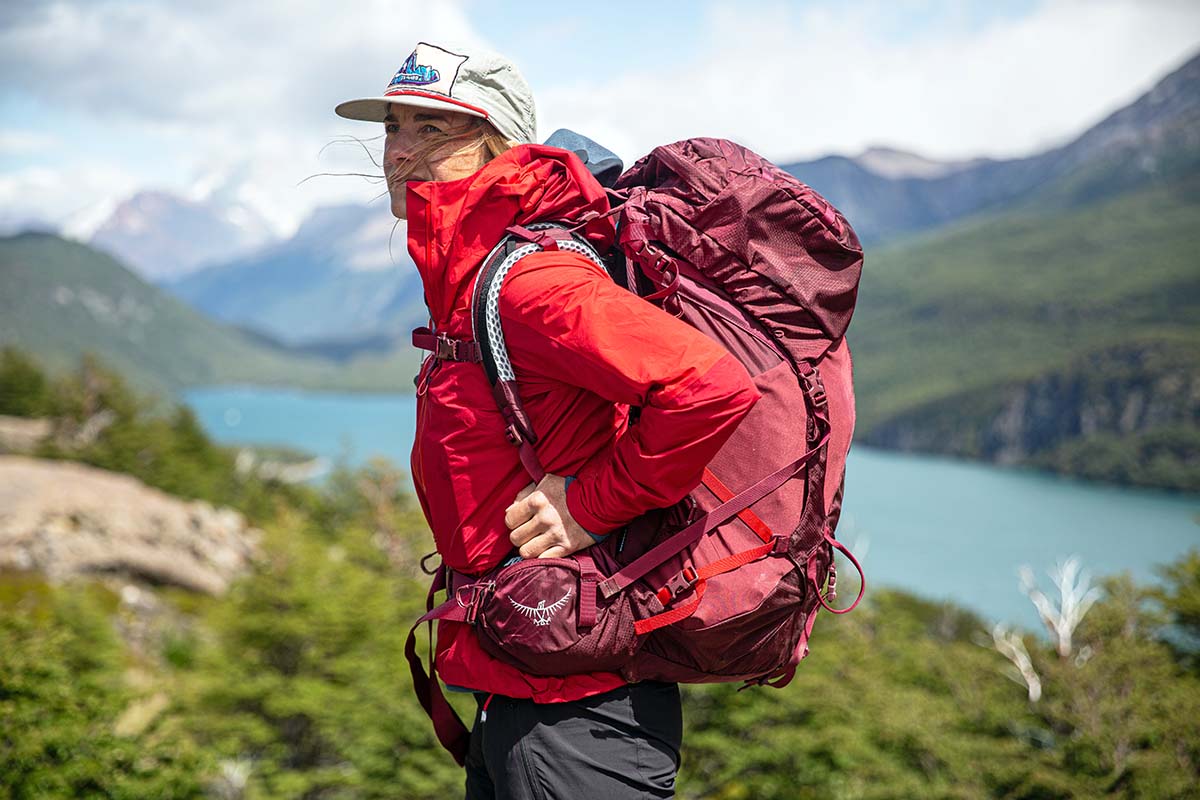
Like the original Aura AG, the LT has a recommended load range of 30 to 40 pounds and features a full-metal frame, tensioned mesh backpanel, and plush foam padding. Even when negotiating steep or off-camber sections of trail with a full load, I never felt like I was pushing the pack’s weight limit. For backpackers who need more weight capacity, it’s worth stepping up to Osprey’s Ariel 65, which bumps the load limit up to 60 pounds. On the other hand, those with particularly lightweight gear might be able to get away with the even more streamlined Eja 58, which maxes out at 35 pounds (see our in-depth Eja review here).
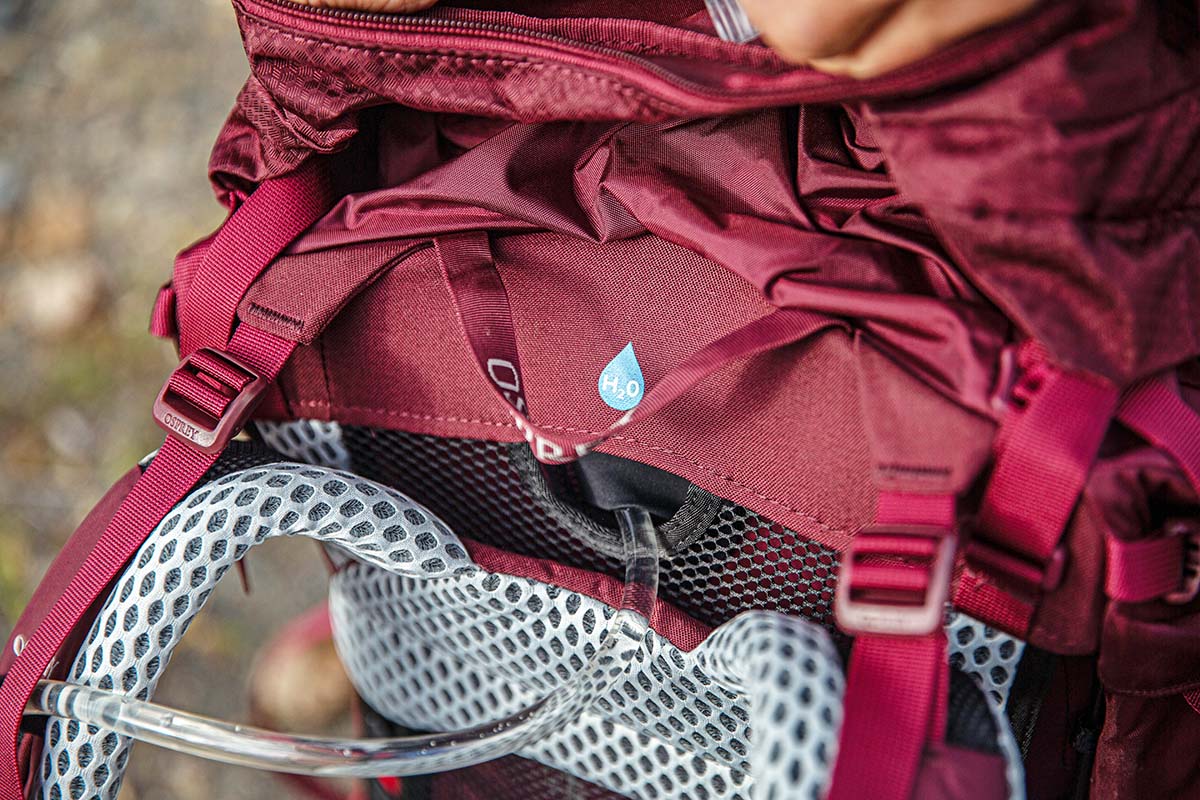
The Aura AG LT 65 checks in at 3 pounds 13.4 ounces for the women’s XS/S, which is over 10 ounces lighter than the standard Aura AG 65. While both packs feature the same material mix and suspension, the LT forgoes a number of features, including multiple pockets and fit adjustments (i.e., adjustable shoulder strap padding and a torso-length slider). In other words, at almost a pound lighter than the standard Aura AG, the LT offers virtually identical comfort and durability, but with a slight drop in terms of organization and fit customization.
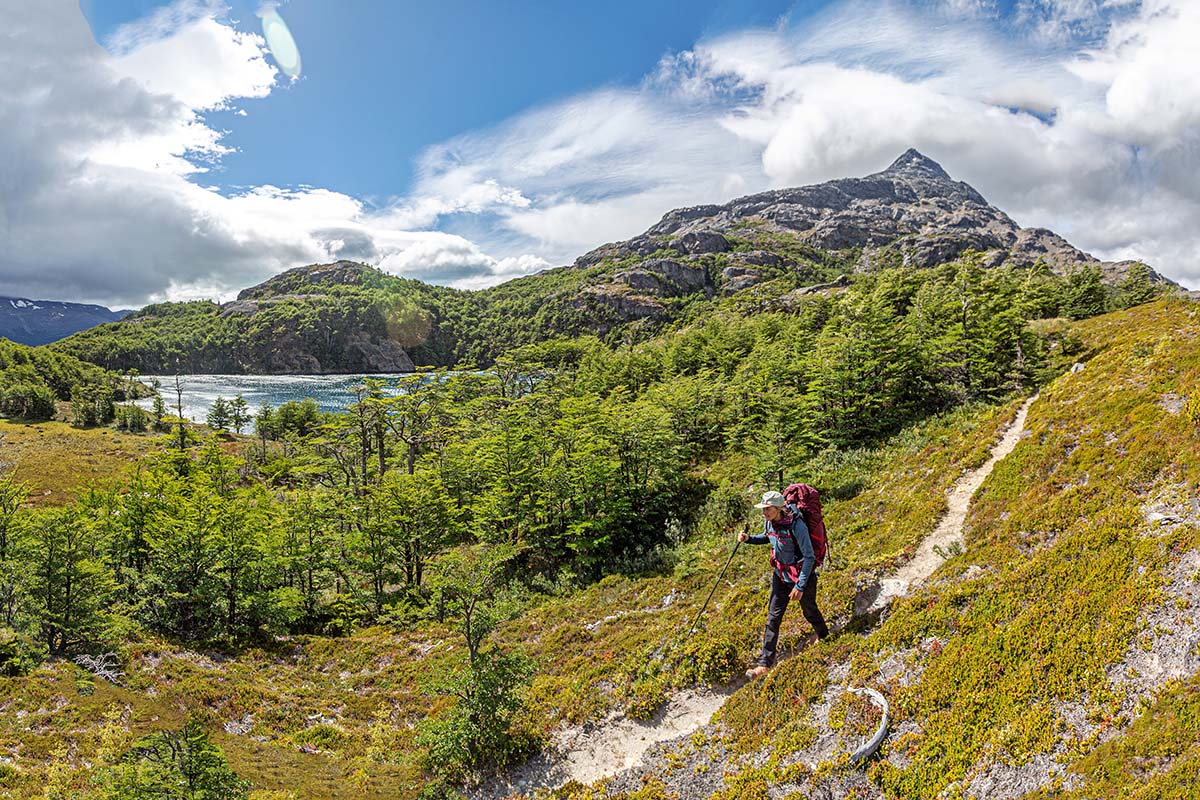
It’s worth noting here that construction and features vary widely even among backpacks of similar capacities: On one end of the spectrum are ultralight models (around 2-3 lb.) that only have a couple pockets and are made with thin materials. At the other are heavy haulers with myriad features and thick, durable fabrics that often approach 5 pounds (including the 4-lb.-11.2-oz. Gregory Deva 70 and 4-lb.-13.6-oz Osprey Ariel 65). The Aura AG LT is one of the few models that falls between these two categories and is most competitive with the Gregory Maven 65 (3 lb. 6.4 oz.) in terms of price, weight, and performance. The Maven notably lacks the Osprey’s premium feel and chart-topping ventilation but tacks on features like a second lid pocket and dedicated sleeping bag compartment.
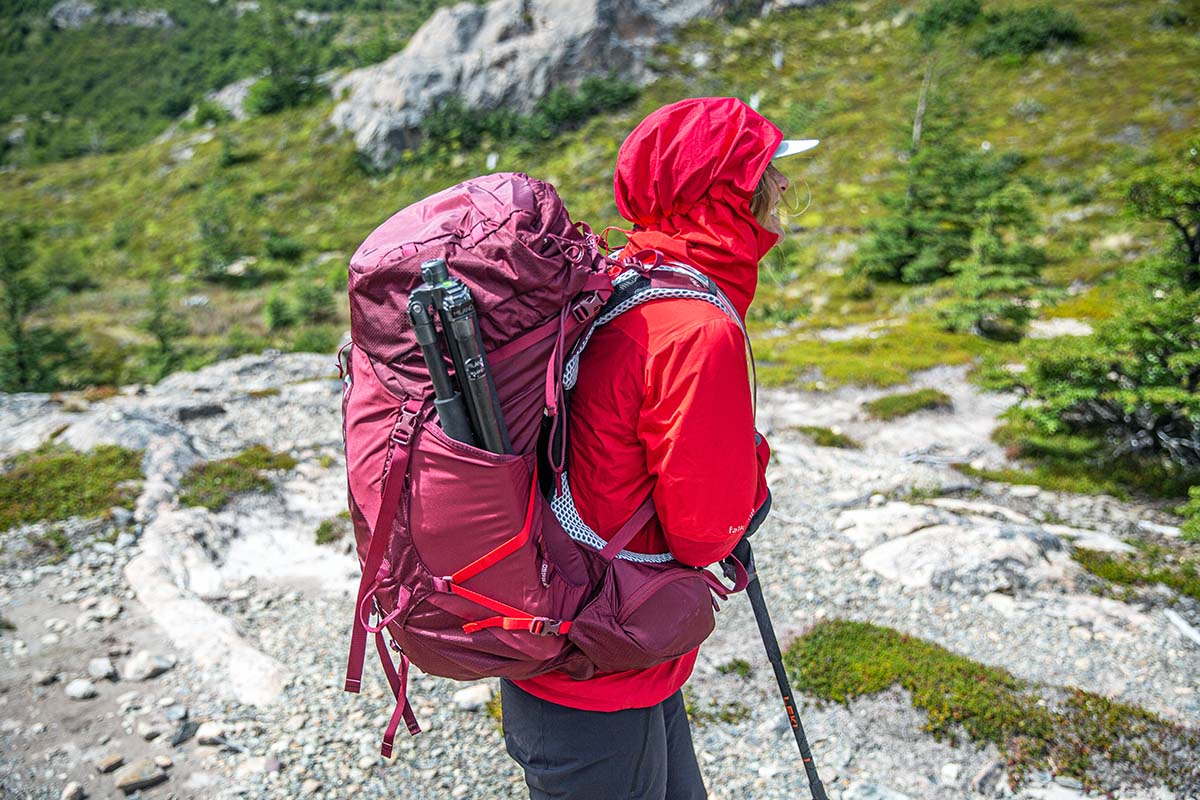
Organizational features are one area the Aura AG LT 65 departs noticeably from the standard Aura AG 65. To shave weight, Osprey did away with everything they deemed superfluous, including generous front access to the main compartment (the LT has one curved zipper at the side), one lid pocket and two front pockets, trekking-pole attachments on the shoulder straps, and dedicated sleeping bag storage. In our opinion, the result is a simplified yet still fully functional pack: Unlike most ultralight designs, you still get two access points to the main compartment (a top drawcord and the side zip), and the pack features six external pockets, including a lid, two hipbelt pockets, and three stretchy dump pockets. Osprey also tacked on compression straps at the sides and front, which are great for strapping down bulky gear like a tripod, tent poles, trekking poles, or a sleeping pad.
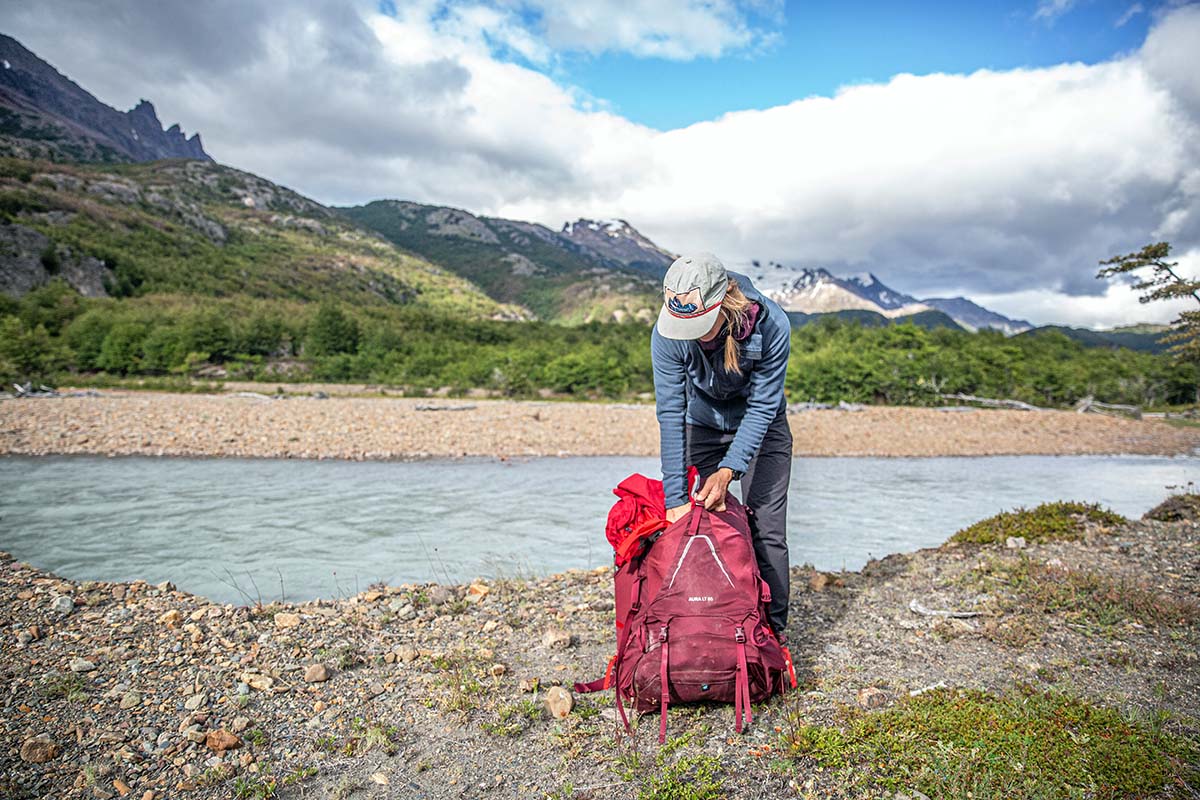
If I were to change anything about the Aura AG LT’s organization, I’d retain the second side panel zip access. I’m accustomed to more minimalist packs (the Gregory Facet 55 and Hyperlite Unbound 40 are two of my favorites) but really appreciated the added convenience of the standard Aura’s more generous opening. Unsurprisingly, once you’re spoiled by one, you want two—more than once I found myself wishing for a zipper on the right side of the pack. Other minor gripes include the size of the hipbelt pockets (a tight squeeze for my iPhone 11) and the massive ice axe loops (I’d love to be able to tuck away or remove these when not in use). I would also put the bulky FlapJacket cover (which covers the top of the pack when the lid is removed) in the superfluous category—it's only useful if you choose to remove the lid and has a tendency to stick out if not carefully placed underneath.
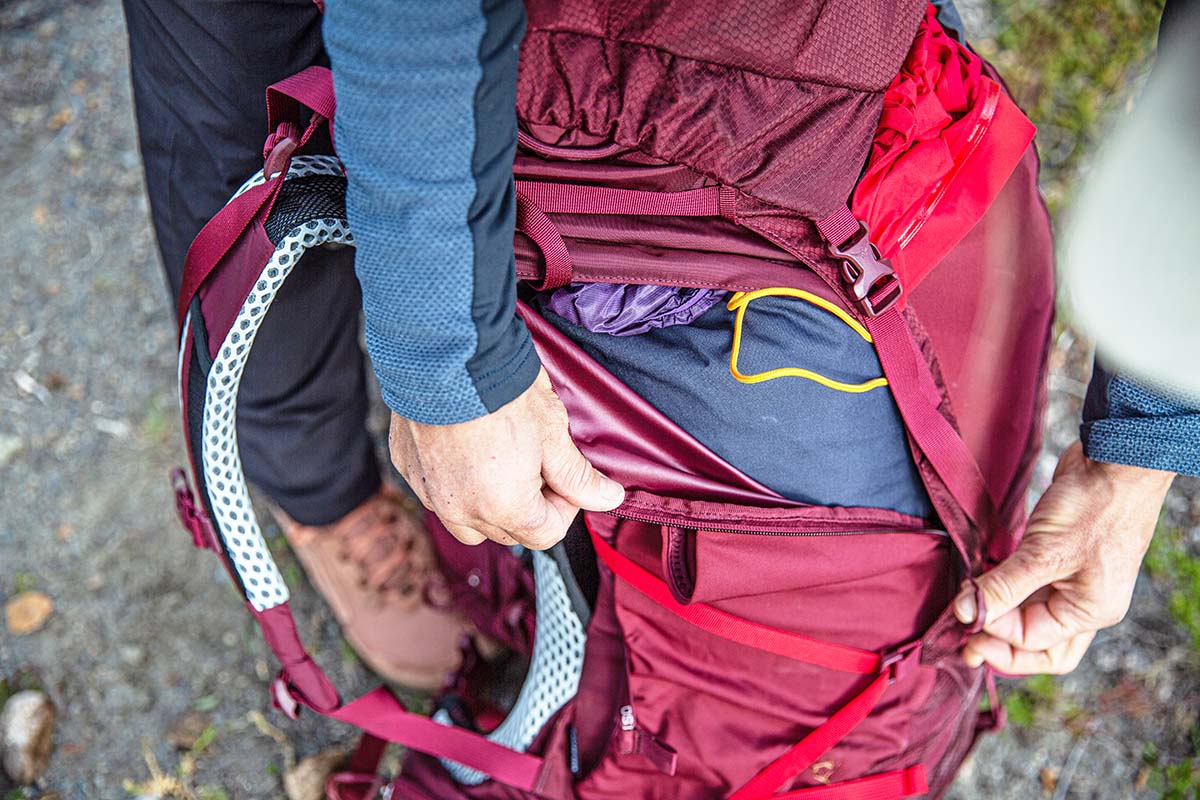
As with the standard Aura AG, one of the defining features of the LT is its large suspended mesh panel that covers the entire back and most of the hipbelt. Dubbed AntiGravity (hence the “AG” in the name), even the shoulder straps have the same open webbing to limit sweat buildup. And in use, it really works: I haven’t worn a pack that encourages this much airflow. In fact, even when I started to overheat while hiking in a fleece jacket, my back remained remarkably sweat-free. Lastly, as I touched on above, the mesh-heavy, trampoline-like build also plays a big role in the pack’s excellent comfort and carrying abilities.
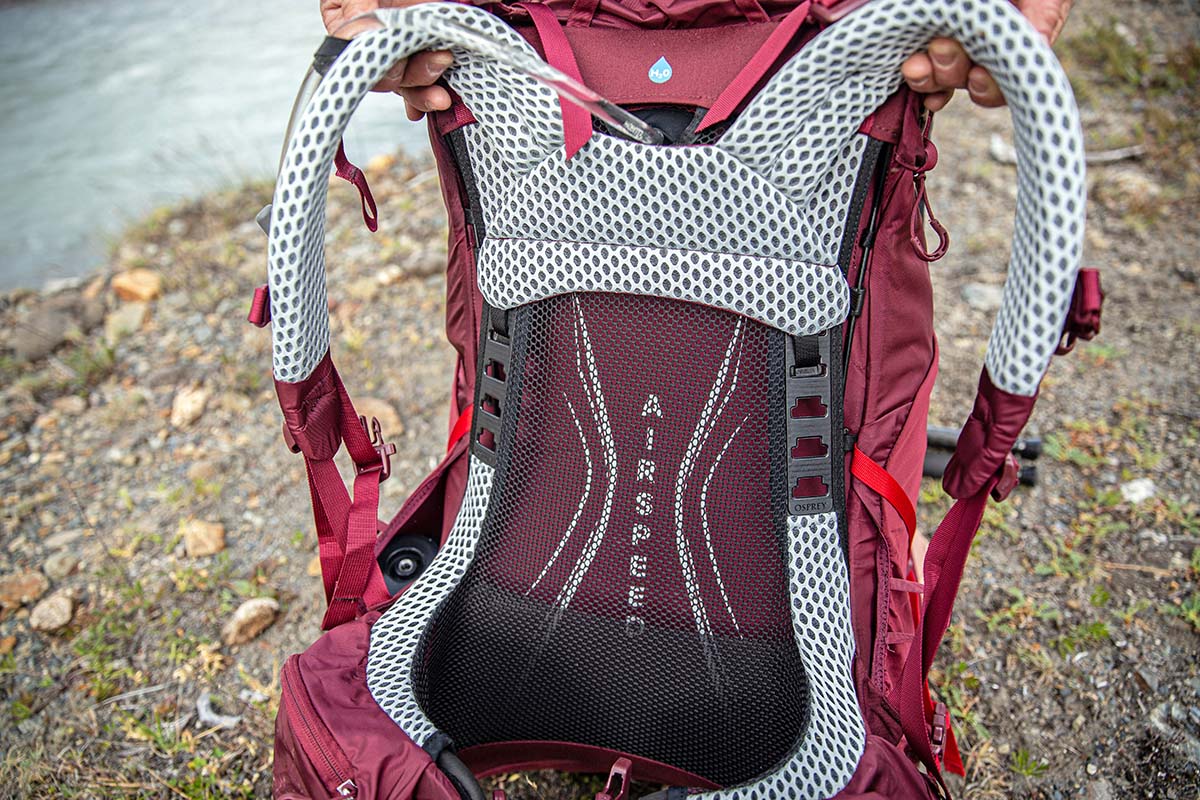
The Osprey Aura AG LT is built to keep light moisture at bay with a durable water repellent (DWR) finish on all the fabrics—including the body, base, and accent—that causes water to bead up and roll off rather than soak through. If you choose to venture out without the lid, the Aura LT features Osprey's patented FlapJacket for water-resistant coverage over the main compartment's drawstring closure. For sustained or heavy rain, Osprey also includes a rain cover, which stores in a dedicated compartment at the bottom of the pack and features a simple cinch to secure the perimeter. It's worth noting that you can shave about 3 ounces from your load by leaving the rain cover behind, but we only recommend this when you're confident that the forecast is free of rain.
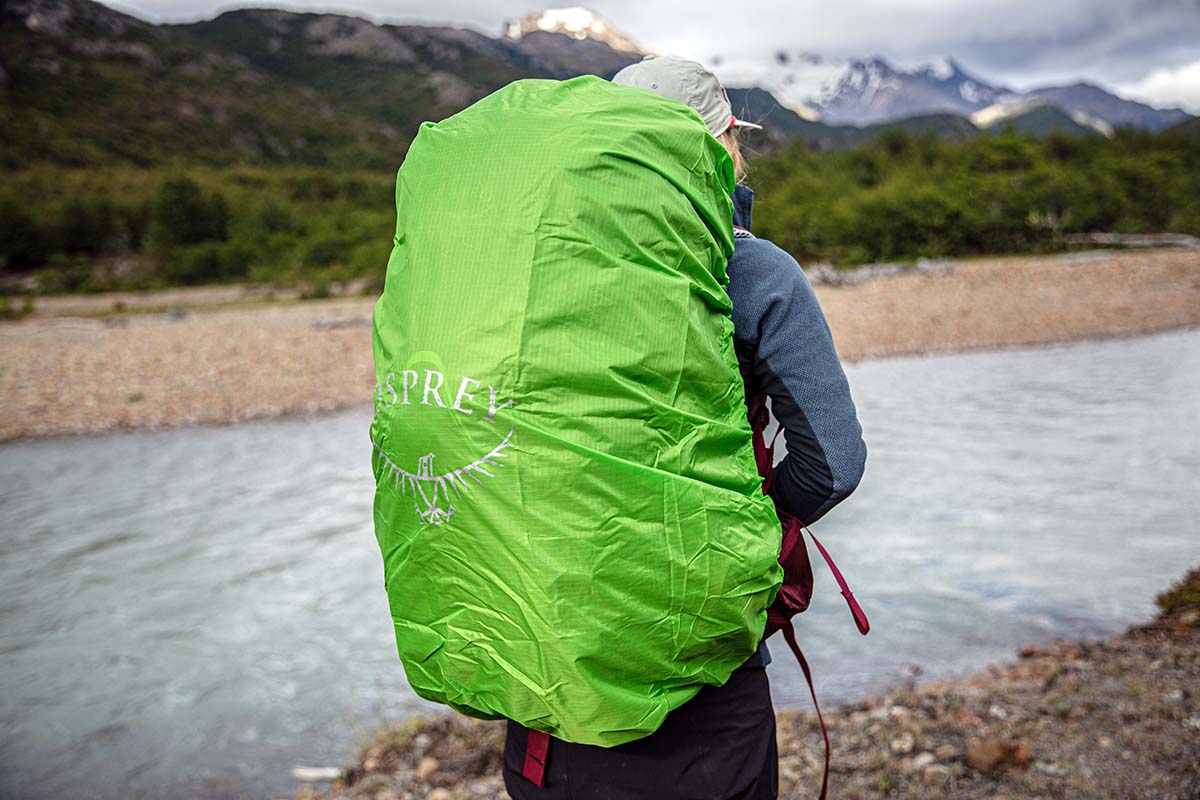
Throughout almost a decade of backpack testing, Osprey’s Aura AG has always stood out to us as one of the highest-quality packs on the market. And the LT version is no exception, with the same durable materials (210D nylon on the body and 500D on the bottom) and premium AntiGravity design. These materials are a noticeable upgrade in thickness from lighter-weight haulers (the lighter-weight Eja features predominantly 100D) and one of the main reasons the LT is still competitive with fully featured packs. We do think that Osprey could have shaved a few more ounces with the use of thinner fabrics, but it’s clear they intended the LT to be as uncompromised as possible. Finally, while these fabrics are water-resistant (via a PFC-free DWR), they’re not waterproof—for full protection, Osprey includes a rain cover, which stows in a dedicated pocket at the bottom of the pack.
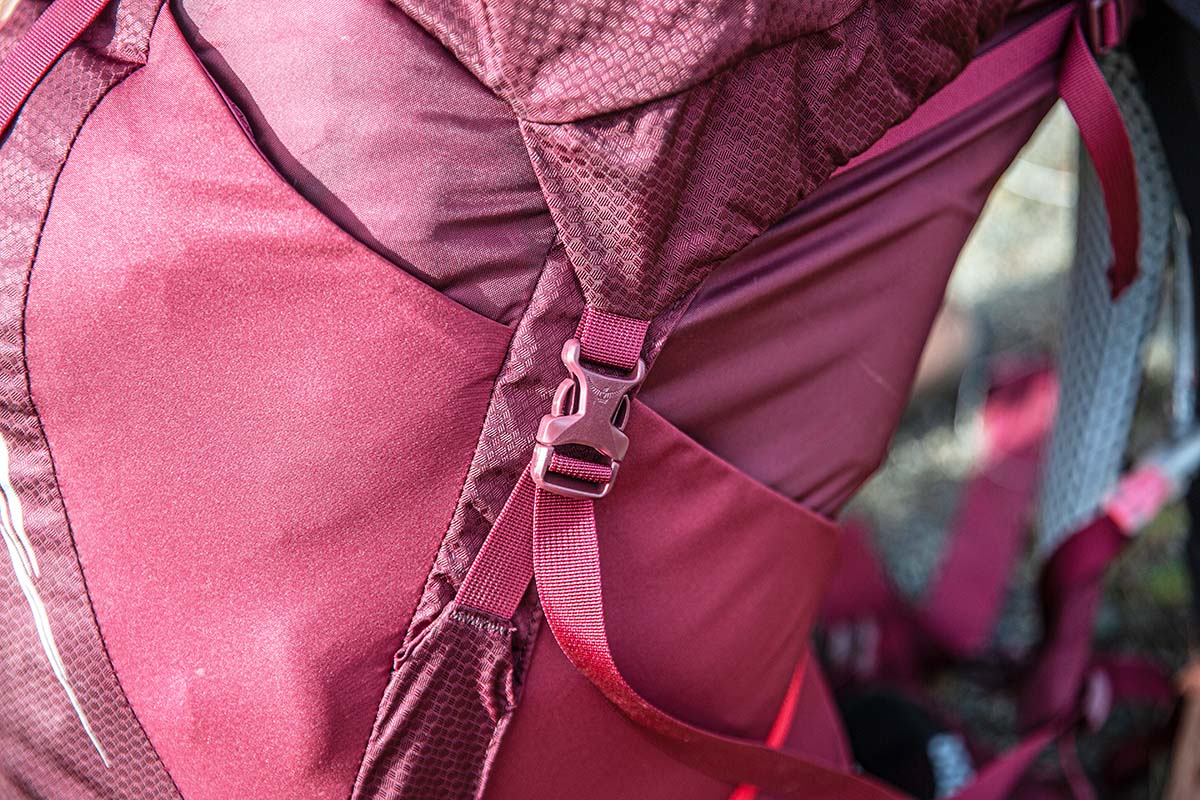
Like the standard Aura AG 65, Osprey offers the LT in two sizes for women (extra small/small and medium/large), which accommodate torsos ranging from 13 to 19.5 inches. To help you dial in the fit, the pack also features 4 inches of torso-length adjustment via a very simple ladder. This design is noticeably easier to toggle than Velcro adjustments (like that of the Gregory Maven), although you’re limited to the five settings rather than being able to fix the torso anywhere within a range. Finally, the XS/S waist belt adjusts from 26 to 50 inches (the M/L’s is 28-50 in.). In the end, this level of customization made it easy for me to dial in a comfortable fit in the extra small/small size for my 17-inch torso length.
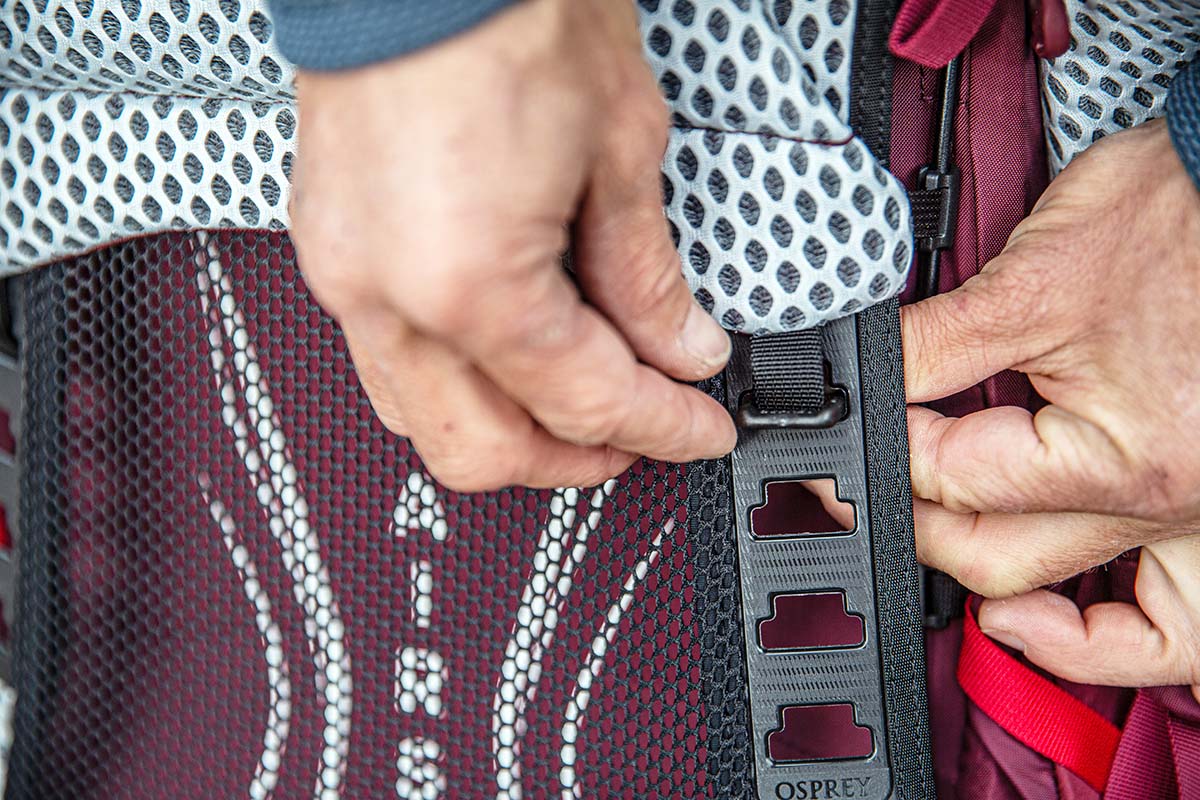
Like most of Osprey’s backpacks, the Aura AG LT 65 incorporates a number of eco-friendly materials into the design. Specifically, the entire pack is now made with recycled and bluesign-approved nylon, which indicates that the chemicals and materials used are safe for the environment, workers, and consumers. The durable water repellent (DWR) coating is also PFC- and PFAS-free, which means it does not contain harmful fluorinated chemicals. We’re big proponents of sustainable practices and happy to see Osprey leading the charge among pack manufacturers.
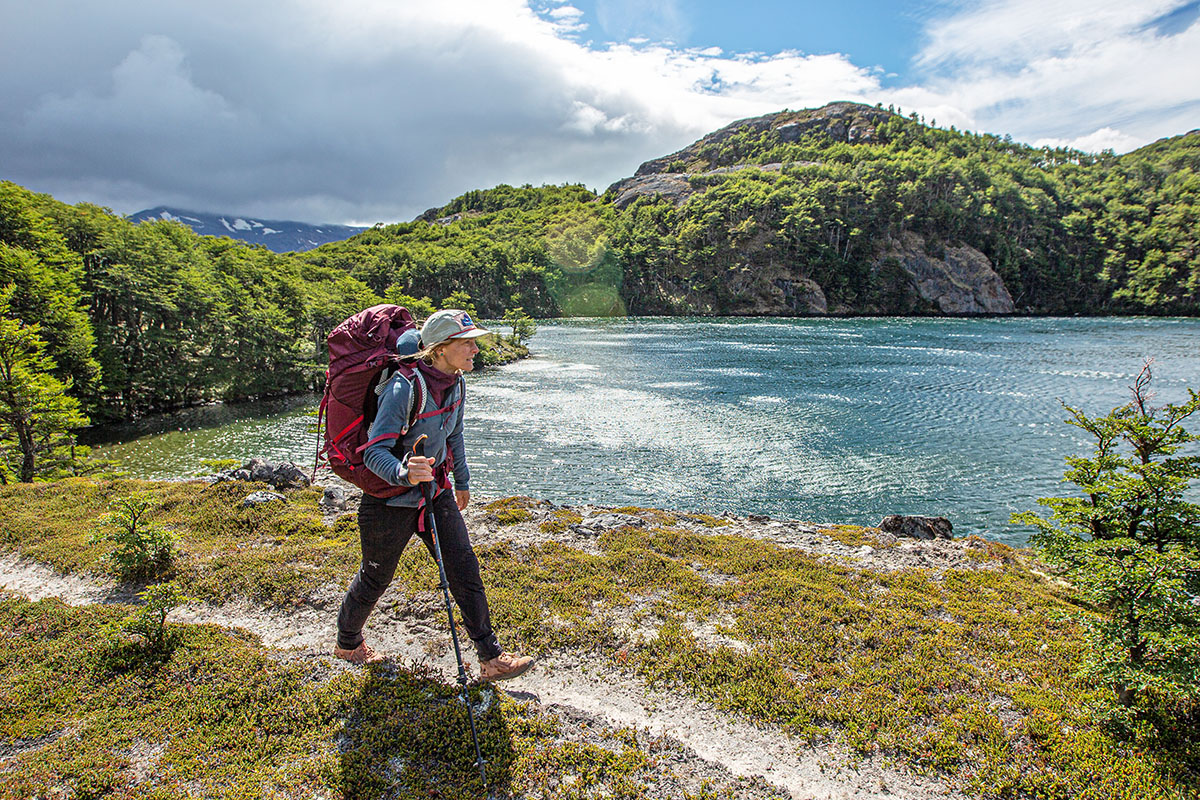
In addition to the 65-liter pack tested here, Osprey also makes the Aura AG LT in a 50-liter version. Compared to the 65, the Aura AG LT 50 costs a little less at $270, shaves off just under an ounce of weight (in the size XS/S), and maxes out at 35 pounds carrying capacity. However, it retains all the storage options as its larger sibling, as well as features like the AntiGravity mesh backpanel, side zipper for accessing the main compartment, floating lid, and well-padded hipbelt and shoulder straps. In our opinion, the 65 is the more versatile size and worth the extra $20 (especially given that the 50 isn’t noticeably lighter). But for shorter trips and those used to packing light, the Aura AG LT 50 is a nice way to save.
We tested the women’s Aura AG LT, but Osprey also makes the pack in a men’s version: the Atmos AG LT. Like the Aura, the Atmos comes in 50- and 65-liter capacities, but it offers a men’s-specific fit and different color options. Importantly, the two designs share the AntiGravity system and key features such as the pocket layout, high-quality fabrics, and external attachment points. For more, see our Atmos AG LT 65 review.
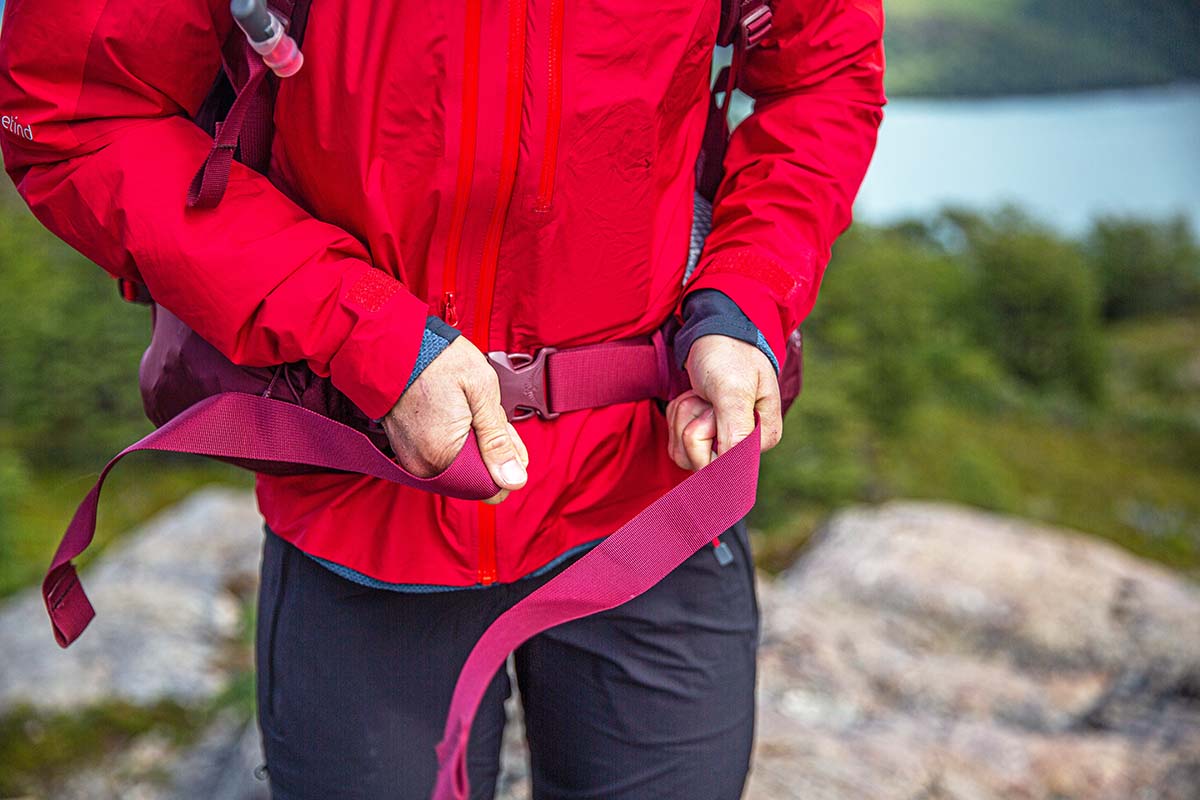
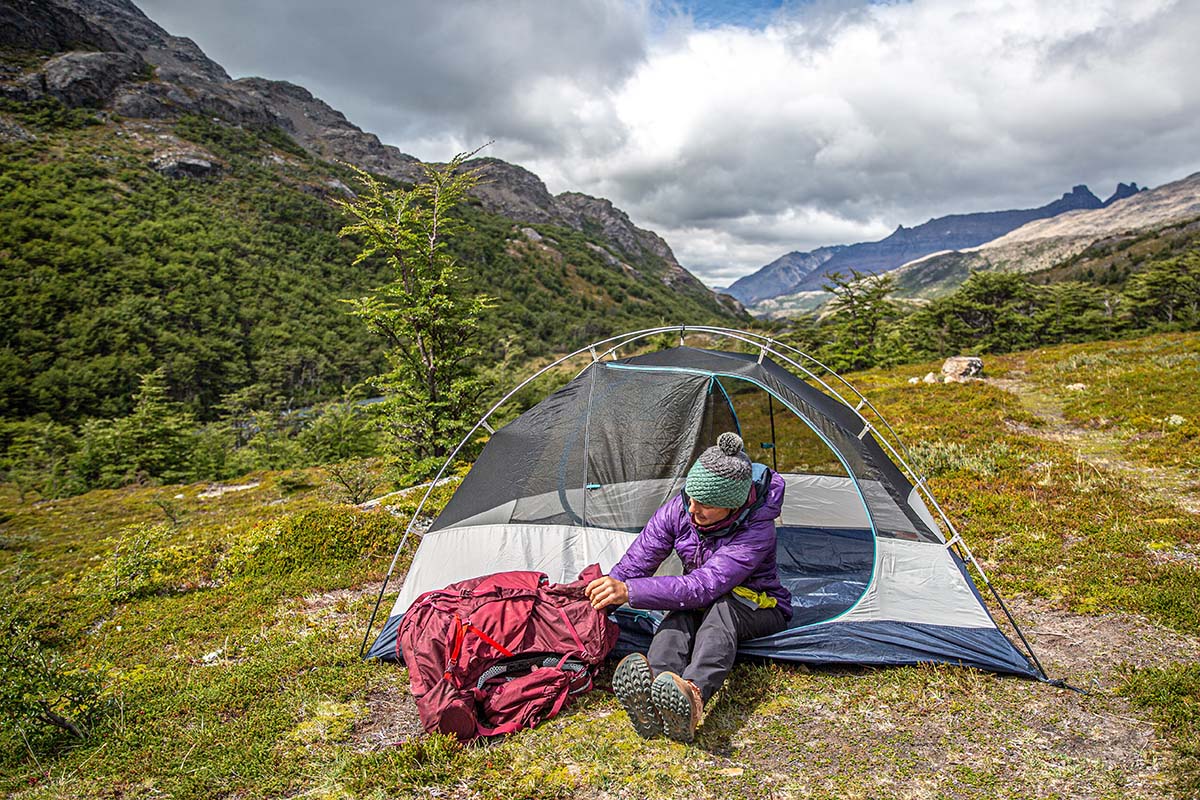
| Pack | Price | Weight | Fabric | Capacities | Access | Pockets |
|---|---|---|---|---|---|---|
| Osprey Aura AG LT 65 | $290 | 3 lb. 13.4 oz. | Nylon (210D & 500D) | 50, 65L | Top, front | 6 exterior |
| Osprey Aura AG 65 | $340 | 4 lb. 7.5 oz. | Nylon (210D & 500D) | 50, 65L | Top, front | 8 exterior |
| Gregory Maven 65 | $280 | 3 lb. 6.4 oz. | Nylon (100D & 420D) | 45, 55, 65L | Top, side | 6 exterior |
| Osprey Eja 58 | $260 | 2 lb. 11.5 oz. | Nylon (100D x 400D) | 38, 48, 58L | Top | 6 exterior |
| Osprey Ariel 65 | $320 | 4 lb. 13.6 oz. | Nylon (210D & 420D) | 55, 65L | Top, front | 7 exterior |
| Granite Gear Blaze 60 | $300 | 3 lb. 1.3 oz. | Nylon (100D & 210D) | 60L | Top, front | 6 exterior |
The most obvious start to our comparisons is the standard Osprey Aura AG 65, the original jumping-off point for the LT. The Aura AG has long been one of our favorite women's backpacking packs for its premium build quality and well-thought-out comfort, ventilation, and feature set. But where the Aura AG has always left us hanging is its weight: At 4 pounds 7.5 ounces for the 65-liter version, it’s undeniably hefty. The standard Aura is over 10 ounces heavier than the LT due to the additional organizational features (an extra side zip access to the main compartment, one more lid pocket and two front pockets, trekking-pole attachments on the shoulder straps, and dedicated sleeping bag storage) and added fit customization (including adjustable padding on the shoulder straps). Notably, both packs feature the same premium suspension, ventilated backpanel, and durable materials. In the end, we’d take the minor compromises of the LT for its considerably lighter build and $50-lower price point. But if you’re a sucker for organization, there’s certainly merit to sticking with the standard Aura AG.
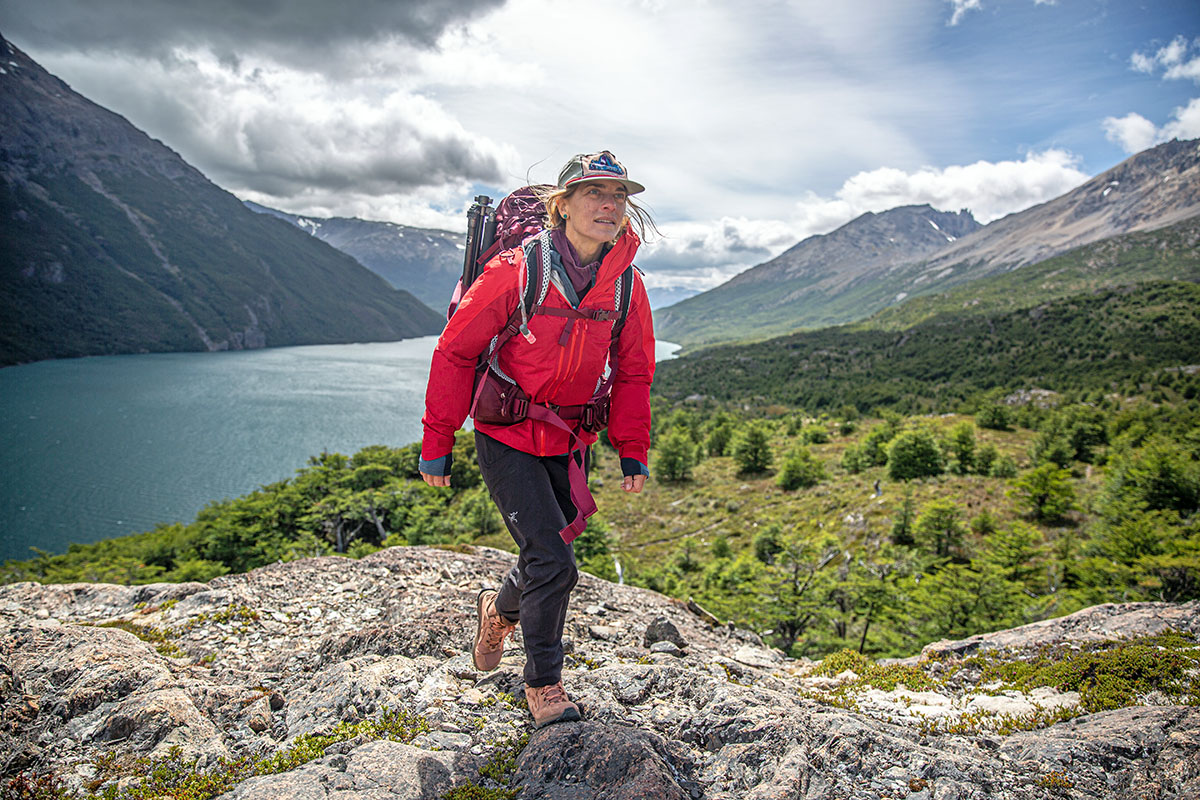
There aren’t many other 65-liter packs that check in between 3 and 4 pounds, but the Gregory Maven 65 joins the Aura AG LT 65 in this elusive category. At $280 and 3 pounds 6.4 ounces, the Maven is both more affordable and lighter than the Aura AG LT, and Gregory advertises a load limit of 50 pounds (10 lb. more than the Osprey). The pack also tacks on features like a second lid pocket and dedicated sleeping bag compartment. But that’s about where the favorable comparisons end for the Maven: The Osprey is the better pack when it comes to comfort and ventilation and offers a more high-end feel. Further, the Aura features a more durable construction with thicker fabric (210D and 500D vs. the Maven’s 100D, 210D, and 420D). Once upon a time, the Gregory Maven had a leg up on the Aura AG 65 for those looking for a lighter pack, but now, the LT is an easy choice.
Going deeper into Osprey’s lineup, the Eja 58 ($260) is an even more simplified pack for those who like to travel light. Checking in at just 2 pounds 11.5 ounces, it’s over a pound lighter than the Aura AG LT, dropping weight through the use of thinner materials (100D and 400D nylon), streamlined organization (you only get top access to the main compartment), a smaller capacity, and a pared-down suspension system. As a result, the Eja’s carrying capacity maxes out at 35 pounds, and you don’t get the same plush comfort and load distribution of the Aura AG LT (on the other hand, ventilation is still excellent). The Eja is a great option for backpackers who have already streamlined the rest of their gear—we love its minimalist design for quick overnights and fast-and-light missions—but most recreational users will want to stick with the more approachable Aura AG LT. And for a true ultralight backpack, check out Osprey's Eja Pro 55, which features 100D NanoFly material and tips the scales at under 2 pounds for the extra small/small version.
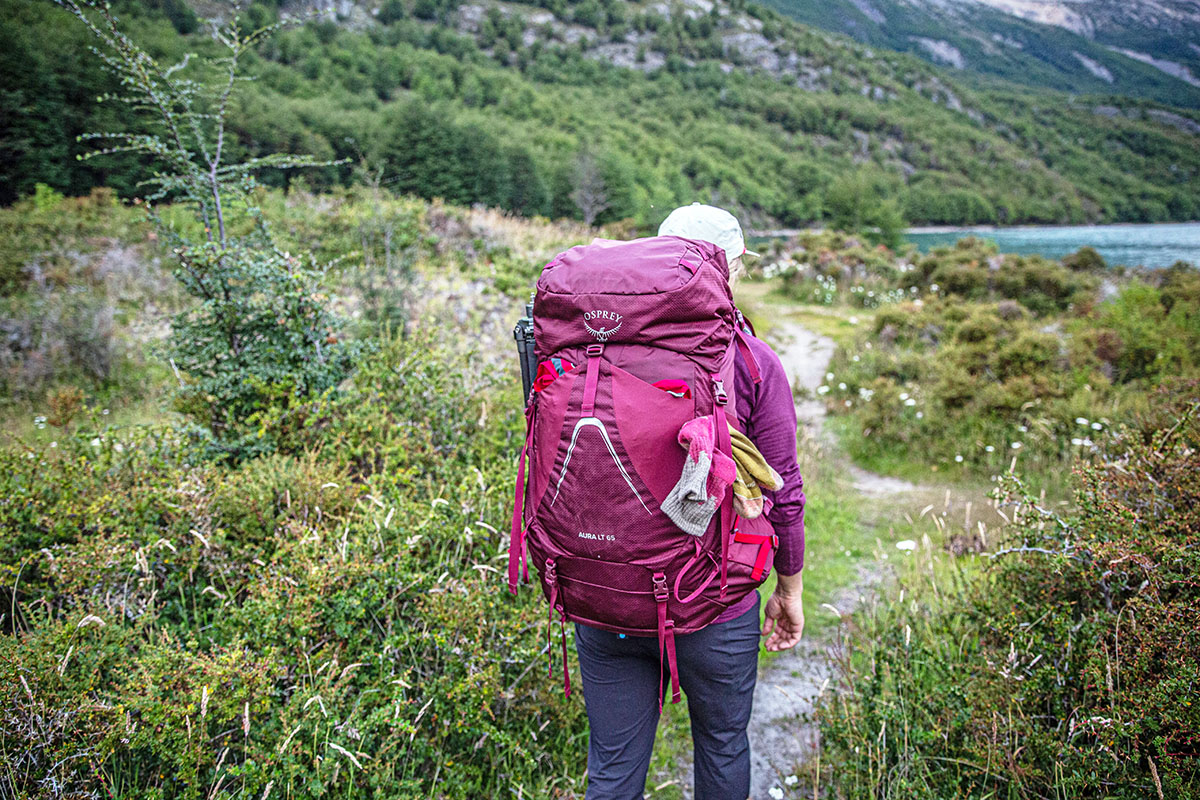
On the other end of Osprey’s lineup is the Ariel 65, one of their most souped-up backpack designs. At 4 pounds 13.6 ounces, the Osprey Ariel 65 is far from ultralight, instead prioritizing durability, comfort, and features. The Ariel 65 no longer shares the Aura’s AntiGravity backpanel, but its AirScape design still is decently breathable and works together with the hipbelt and shoulder straps to support loads up to 60 pounds. And unlike the Aura AG LT’s more streamlined organization, the Ariel offers a J-shaped front zipper for easy access to the main compartment and a dedicated sleeping bag compartment. In most cases, we’d go with the lighter Aura AG LT, but the Ariel has its place for those shouldering serious weight or who like the extra features (for more, see our in-depth Ariel 65 review).
Last but not least is the Granite Gear Blaze 60, a great option for those looking for a simple yet comfortable backpacking pack. The Blaze lacks the high-end finishes and frills of the Aura AG LT, but it’s well built and can support loads up to 50 pounds. It also undercuts the Osprey in terms of weight (3 lb. 1.3 oz. for the short torso length) and offers many of the same organizational features, including a removable lid, external dump pockets and hipbelt storage, and a tall zipper on the front for accessing the main compartment. The most noteworthy distinction between the two packs is the backpanel construction: The Blaze’s rigid foam simply can’t compete with the Aura AG LT’s mesh in terms of ventilation and comfort. But the suspended mesh backpanel design is not for everyone, and there’s a lot to like about the more traditional Blaze.
If you’re thinking about buying gear that we’ve reviewed on Switchback Travel, you can help support us in the process. Just click on any of the seller links above, and if you make a purchase, we receive a small percentage of the transaction. The cost of the product is the same to you but this helps us continue to test and write about outdoor gear. Thanks and we appreciate your support!
Depending on the seller, most products ship free in the United States on orders of $50 or more. International shipping availability and rates vary by seller. The pricing information on this page is updated hourly but we are not responsible for inaccuracies.